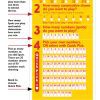Want to learn how to play Heads Up Poker? Well, you’re in the right place! In this guide, I’ll show you the ropes of this thrilling card game and help you become a master player. Whether you’re a beginner or have some experience, you’re about to dive into the exciting world of Heads Up Poker. So, let’s get started and learn how to dominate the poker table!
Heads Up Poker is a variation of the classic game, where you go head-to-head with just one opponent. It’s a fast-paced and intense form of poker that challenges your strategy, skill, and ability to read your opponent. Picture yourself as a poker gladiator, facing off against a worthy adversary in a battle of wits and cards. Exciting, right?
Don’t worry if you’re new to poker or if you’ve only played at full tables before. Playing Heads Up Poker is a whole different beast, but don’t fret! I’ll guide you through the rules, strategies, and techniques that will give you the upper hand. Get ready to bluff, make smart decisions, and outplay your opponent. It’s time to become a Heads Up Poker pro!
- Begin by determining the dealer through a random method, such as flipping a coin.
- The dealer deals two private cards facedown to each player.
- The first round of betting takes place, starting with the player to the left of the dealer.
- After the betting round, the dealer reveals three community cards in the middle of the table.
- Another round of betting occurs, followed by the dealer revealing the fourth community card.
- A final round of betting takes place, and the dealer reveals the fifth and final community card.
- Both players reveal their private cards, and the best hand wins the game!

How to Play Heads Up Poker: A Beginner’s Guide
Heads up poker is an intense and strategic variation of traditional poker games. Unlike regular poker, where you compete against multiple opponents, heads up poker is a one-on-one battle where every decision you make carries significant weight. In this article, we will guide you through the essential rules, strategies, and tips to play heads up poker like a pro. Whether you’re a beginner or a seasoned player looking to sharpen your skills, this comprehensive guide has got you covered.
Key Rules of Heads Up Poker
Before diving into the strategies and tips, it’s crucial to understand the basic rules that govern heads up poker. Here are the key elements you need to know:
Position: In heads up poker, the dealer position rotates between the two players after each hand. The player in the dealer position (also known as the button) acts last, giving them a positional advantage.
Blinds: Heads up poker typically uses a small blind and a big blind. The small blind is posted by the non-dealer, and the big blind is posted by the dealer. The blinds ensure there is action in every hand.
Hand Rankings: The hand rankings in heads up poker are the same as in regular poker. From highest to lowest: royal flush, straight flush, four of a kind, full house, flush, straight, three of a kind, two pair, one pair, high card.
Betting Rounds: Heads up poker follows the same betting structure as traditional poker. There are pre-flop, flop, turn, and river betting rounds. Players can choose to fold, bet, call, or raise during each round, depending on the strength of their hand.
Winning the Pot: The player with the highest-ranked hand at the showdown wins the pot. If one player folds, the other player automatically wins the pot without showing their cards.
Mastering Pre-Flop Strategy
The pre-flop stage is crucial in heads up poker, as it sets the tone for the rest of the hand. Here are three key strategies to keep in mind during the pre-flop stage:
1. Starting Hands: In heads up poker, you should be more aggressive with your starting hands. Play a wider range of hands and be willing to raise and re-raise. Hands like pocket pairs, suited connectors, and high-ranking cards are strong starting hands.
2. Positional Advantage: The player in the dealer position has a significant advantage. They can see their opponent’s action first and make informed decisions accordingly. Use your positional advantage to bluff, steal blinds, and put pressure on your opponent.
3. Observing Your Opponent: Pay close attention to your opponent’s tendencies and patterns during the pre-flop stage. Look for any signs of weakness or strength in their betting patterns or body language. Exploit their weaknesses and adjust your strategy accordingly.
Winning Strategies for the Flop, Turn, and River
As the hand progresses to the flop, turn, and river, the strategies in heads up poker become more nuanced. Here are three winning strategies to employ during these stages:
1. Hand Reading: Develop the ability to read your opponent’s hand based on their betting patterns and actions on the board. Look for any inconsistencies and play accordingly. Adjust your bets and raises based on the strength of your hand and your read on your opponent.
2. Aggression: Heads up poker requires an aggressive approach. Look for opportunities to take control of the hand and dictate the betting. Steal pots with well-timed bluffs and use your strong hands to extract maximum value from your opponent.
3. Adaptability: Heads up poker is a dynamic game, and your strategy should constantly adapt to your opponent’s playing style. If your opponent is playing aggressively, consider tightening up and playing more defensively. If they are passive, take advantage by becoming more aggressive.
Advanced Strategies and Expert Tips
1. Utilize Positional Bluffs
Positional bluffs are a powerful tool in heads up poker. When you are in the dealer position, take advantage of your position and bluff more frequently. Your opponent will feel the pressure of acting first and may be more likely to fold.
2. Study Your Opponent
Take the time to study your opponent’s playing style and tendencies. Look for any patterns or tells that can give away the strength of their hand. The more you know about your opponent, the better positioned you are to make informed decisions.
3. Practice Bankroll Management
Heads up poker can be high-stakes and volatile. It’s essential to practice proper bankroll management to ensure you don’t go bust. Set a budget for your poker sessions and never play with more than you can afford to lose.
Conclusion
Playing heads up poker requires a combination of skill, strategy, and adaptability. By understanding the rules, mastering pre-flop strategies, employing winning strategies during the flop, turn, and river, and incorporating advanced techniques, you can increase your chances of success in this intense and exciting form of poker. Remember to always practice responsible gambling and enjoy the strategic challenges that heads up poker brings.
Key Takeaways: How to Play Heads Up Poker?
- Heads Up Poker is a two-player version of poker.
- Each player is dealt two private cards, and five community cards are placed on the table.
- The goal is to make the best five-card hand using a combination of private and community cards.
- Players take turns betting or folding, trying to outsmart their opponent.
- Bluffing is an essential strategy in heads up poker as it can deceive your opponent and lead to victory.
Frequently Asked Questions
Are you curious about how to play heads up poker? Look no further! Here are the answers to some commonly asked questions to get you started on your poker journey.
1. What is heads up poker?
Heads up poker is a variation of the classic game where two players compete against each other. Instead of a full table with multiple players, heads up poker is played with only two players facing off against each other.
This form of poker requires a different strategy and approach compared to traditional games, as every decision you make will directly impact your opponent. It’s a thrilling and intense game that tests your poker skills and psychological tactics.
2. How does heads up poker differ from regular poker?
In heads up poker, the dynamics change significantly due to the limited number of players. With fewer players, the hand values and overall strategy change. Hands that may be unplayable in a full game can become powerful in a heads up match.
Moreover, bluffing plays a more significant role in heads up poker due to the increased frequency of one-on-one confrontations. You must evaluate your opponent’s playing style and adjust your strategy accordingly to gain the upper hand.
3. What are some key tips for playing heads up poker?
To succeed in heads up poker, it’s crucial to be aggressive and assertive. Seize every opportunity to bet and build a strong lead. However, balance this aggressiveness with caution, as your opponent can easily exploit any predictable patterns.
Additionally, paying close attention to your opponent’s bet sizing, body language, and overall gameplay can provide valuable insights. Use this information to adjust your own strategy and exploit weaknesses in your opponent’s game.
4. How do I adjust my strategy for different opponents?
Each opponent in heads up poker will have their own unique style of play, and adapting to their strategy is key. If your opponent is playing aggressively, try to trap them with well-timed traps and strong hands. On the other hand, if they are playing passively, utilize your aggression to put them under pressure.
Remember, always remain flexible and be prepared to adjust your strategy throughout the game. Analyzing your opponent’s tendencies and adjusting your play accordingly will give you a significant edge in heads up poker.
5. What are some common mistakes to avoid in heads up poker?
One common mistake in heads up poker is being too predictable in your betting patterns. Vary your bet sizes and use bluffs strategically to confuse your opponent.
Another mistake is overestimating the value of marginal hands. Since the hand values change in heads up play, it’s important to reevaluate the strength of your hand and not rely solely on preconceived notions from traditional poker games.
How I Play Heads Up No Limit Hold’em
Summary:
So, now you know how to play heads up poker! Just remember these key points: Heads up poker is a game with only two players, and both players receive two private cards. The goal is to make the best five-card hand using your cards and the community cards. You can bet, raise, fold, or check to make strategic moves. Keep track of your opponent’s moves and use bluffing wisely to outsmart them. Good luck, and may the best player win!
In conclusion, playing heads up poker is all about strategy, observation, and making the right moves at the right time. Remember to have fun and enjoy the game, whether you’re playing with friends or in a professional setting.









